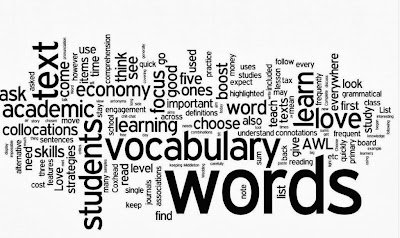Academic language sure seems like an educational sport. There is team-work, practice, learning of skills, a coach, etc that all work together to, hopefully create a win in the learning category.
In Chapter 6, Buehl brings up the idea of students wanting to imitate different sports figures and their 'moves.' He specifically applies this metaphor to literacy saying that just as sports players have moves to win their sports, 'proficient readers have also established a repertoire of successful moves that enable them to handle a wide range of texts for a variety of useful purposes' (p 225). Throughout the different readings this week, this is what really gave me some more clarity in the topic of academic language and how we can support our students in this. Just as a coach is not present to play the game for the players, the teacher is there to give students the strategies and game plans/plays to go out on the court and play the best game they can. All the different study skills and practices that Buehl went over seem comparable to plays a coach would provide for the players. I like when he talks about how we must use the learning strategies - how he focuses on a solution to the problems that can block student learning and comprehension. Particularly important, I think, is when he points out that there the strategies shouldn't be limited, rather, students should be given 'disciplinary- specific strategies that will vary in form and application, depending on the natue of the text and the demands of the discipline' (p 223). Students are not made from cookie cutters, and I think this point addresses a really foundational problem where all students are given the same strategy and expected to find success with it in whatever content they are in. Just like a sports game, where plays are often determined based on the skills and plays of the specific opposing team (it seems like each team encountered could represent a different content area), strategies for reading comprehension and using academic language are going to be different depending on what topic and what student. But again, a strategy without proper scaffolding or knowledge of how to use it will probably be fairly useless.
I remember playing elementary school sports, and before we could participate in the games, we had to have 10 practices under our belts. When I was in fifth grade, I played basketball for the first time. I remember asking what defense and offenses meant and which side you were suppose to stand on. I didn't have a clue....but by the time I was playing as a high school sophomore, I'd figured those basic things out! :) The readings really seem to point to this need for students to practice to learn the basic skills and strategies for reading comprehension and for learning academic language. These gradual release of responsibility allows students to go from learning the basics and doing the skill drills, like dibbling and shooting, to scrimmaging, to actually playing a game on their own, with the coach on the sidelines. To me, the Interactive Reading Guide (Buehl) and other English Language Development (ELD) (Donnelly) strategies are perfect drills to help students to learn those skills and to help students grasp and master important concepts like the six characteristics of academic language that are talked about in the Nagy reading.
I think one key to all of it is intention. If a player doesn't know the point of the game is to score baskets and get the most points, they are not going to be motivated to practice or play. They may not see how a skill they are having to drill with is going to apply to the game. The same goes for the study skills and strategies. For example, Buehl mentions graphic representations/organizers and how they must be used as more than chaotic representations of materials - that students must be shown several examples and their must be a scaffolding to the point where students are ready to create their own, which has more meaning. If they don't understand the point of the activity, their work will lack focus.
One more thing that stood out to me was the need for team-work. Both Buehl and Donnelly speak to the need for that, for example, Buehl's reading guides, and the instance pointed out in Donnelly when students were asked to write a Venn Diagram, but it didn't require students to even talk or really write about the concept. Their is a need for students to interact and share. Just as in most sports, you can accomplish more with a team, so it is in academics, having a chance to talk with peers provides students an opportunity to put their skills in practice and get feedback and assistance in strengthening their academic muscles.
My question this week came to mind when I was reading the Nagy article. It mentioned that their is usually an increase in the difficulty of academic language starting in fourth grade. Yet, they also say the interventions don't begin until the secondary level. I know most of what we are learning can be used at earlier grades to help lessen the need for intervention, but shouldn't the system start putting in more support when the increase in difficulty begins? What are some preventative measures that can be taken earlier to decrease the need for intervention?
P.S. Whoever can find a grammatical metaphor (Nagy) in this post wins! ;)



